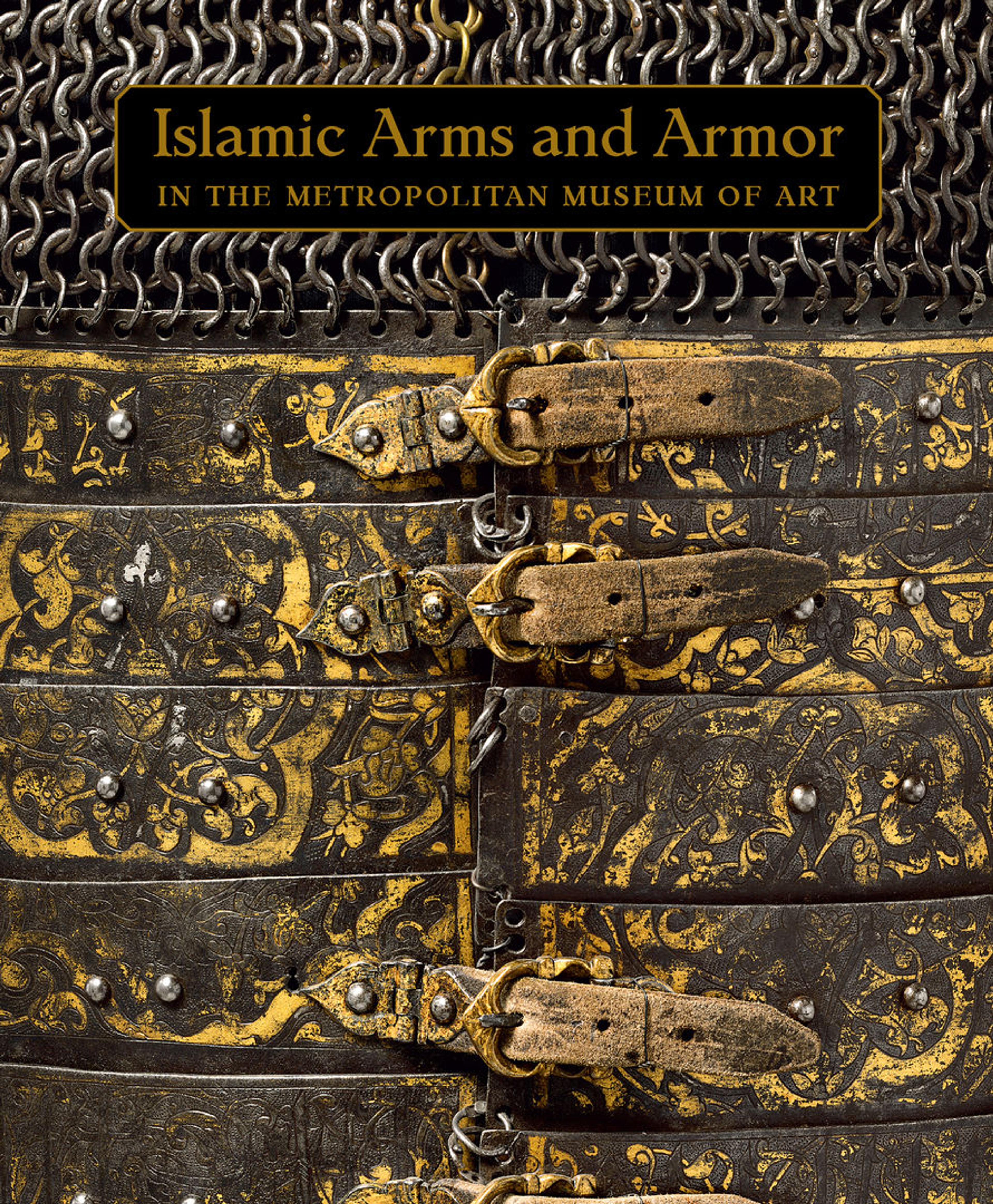Cuirass
The cuirass, from the royal armory of Hyderabad, bears the name of a later ruler, the nizam ‘Alī Khān (reigned 1762–1803), who led the state of Hyderabad through a period of economic growth during which it became the most important Muslim cultural center in India. The unusual one-piece construction of the breastplate and the backplate, which resembles a stylized human torso, possibly reflects European incfluence. Both plates are forged from crucible steel, which also is referred to as watered steel because of the subtle rippling pattern visible in the structure of the metal. Watered steel was used often for sword and dagger blades, but only seldom for armor, and then only for examples of superior quality.
Artwork Details
- Title: Cuirass
- Date: dated A.H. 1192/ 1778–79 CE
- Geography: Hyderabad
- Culture: Indian, Hyderabad
- Medium: Steel, iron, textile (velvet)
- Dimensions: Breastplate (a); H. 16 in. (40.6 cm); Wt. 3 lb. 13 oz. (1733 g); backplate (b); H. 18 1/4 in. (46.4 cm); Wt. 3 lb. 9 oz. (1620 g)
- Classification: Armor Parts-Cuirasses
- Credit Line: Bashford Dean Memorial Collection, Funds from various donors, 1929
- Object Number: 29.158.165a, b
- Curatorial Department: Arms and Armor
More Artwork
Research Resources
The Met provides unparalleled resources for research and welcomes an international community of students and scholars. The Met's Open Access API is where creators and researchers can connect to the The Met collection. Open Access data and public domain images are available for unrestricted commercial and noncommercial use without permission or fee.
To request images under copyright and other restrictions, please use this Image Request form.
Feedback
We continue to research and examine historical and cultural context for objects in The Met collection. If you have comments or questions about this object record, please complete and submit this form. The Museum looks forward to receiving your comments.
